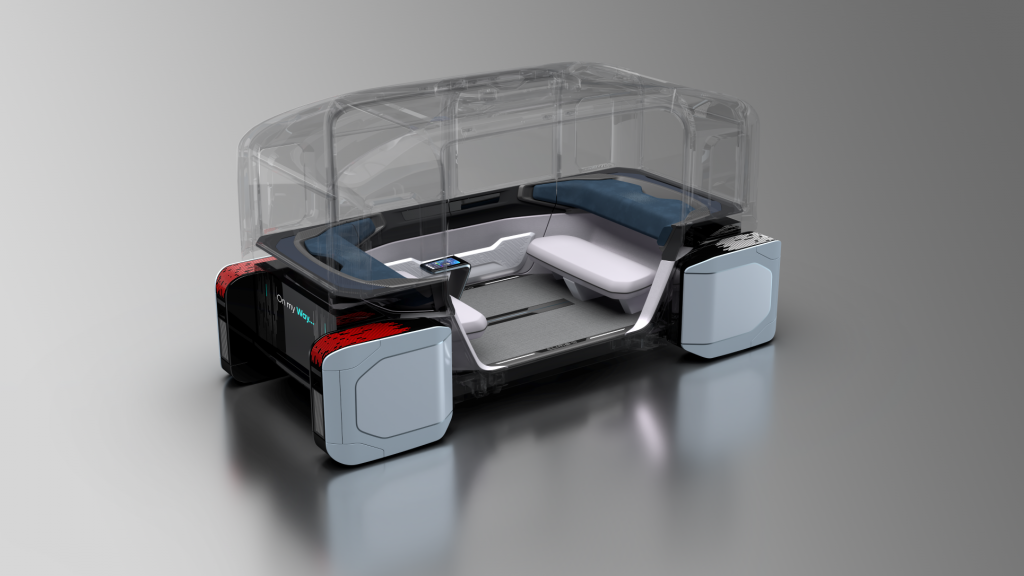
Italdesign revealed a project at CES 2023 called Climb-E that offers the possibility of traveling in a private environment without ever having to change vehicles, guaranteeing maximum comfort, and breaking down any architectural barriers to the travel—an increasingly topical and sensitive issue in the development of urban areas. The design consulting believes that the project confirms its role as a “technology enabler and hub” capable of uniting different industrial sectors to promote and develop innovation. It was created in a collaboration with the Schindler Group and the Politecnico di Torino Department of Architecture and Design and the Interateneo Department of Land Science, Design and Policy.
Italdesign and Schindler—a leading provider of elevators, escalators, and transit-management systems that make an important contribution to mobility in urban environments—are collaborating on the project to design new mobility possibilities combined with urban infrastructure. The concept is based on a modular system that includes autonomous skids, an elevator frame, and personal capsules. The modular system of capsules that can autonomously move vertically but also horizontally creates new opportunities for future cities.


Seamless autonomous travel from door to door offers comfort in a completely new dimension. Personalization of the capsule offers mobility on a new level, where car space, elevator space, and flat space become one. With the project, the partners are jointly rethinking building and facade design, as well as solving everyday city problems like traffic jams or limited parking slots by means of connectivity.
Integration with architecture and the city is also the vision of the Politecnico di Torino Faculty of Architecture and Design and Inter-University Department of Regional & Urban Studies and Planning. Climb-E, in its dual function of transport and home or office extension, creates a new connection between mobility and architecture: a hybrid between a means of transport and a home.
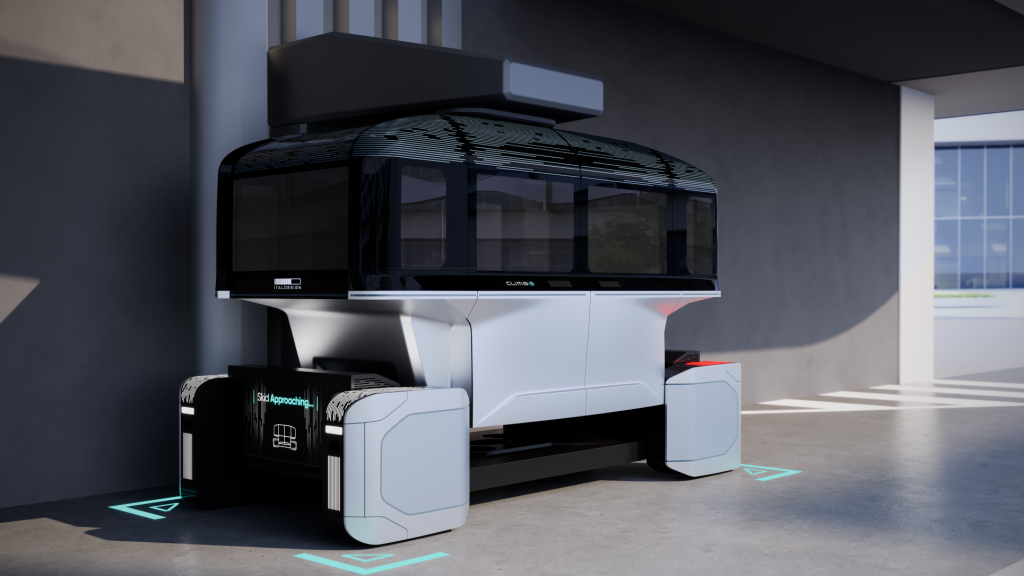
The capsule and skid
Climb-E is a modular means of transport formed of a capsule, designed for private use, which can transport in standard configuration up to four people and can be coupled, when moving, with a fully electric platform (called the skid), which is not owned but rather shared and features autonomous driving.
The capsule is 3669 mm long, 2180 mm tall, and 1900 mm wide—and holds up to 4 passengers. The skid has a length of 3969 mm, height of 930 mm, and width of 1900 mm.
The unique added value of the concept is the capsule’s capacity to find its natural place as an integral part of various residential or working locations, becoming an additional room and/or extension.

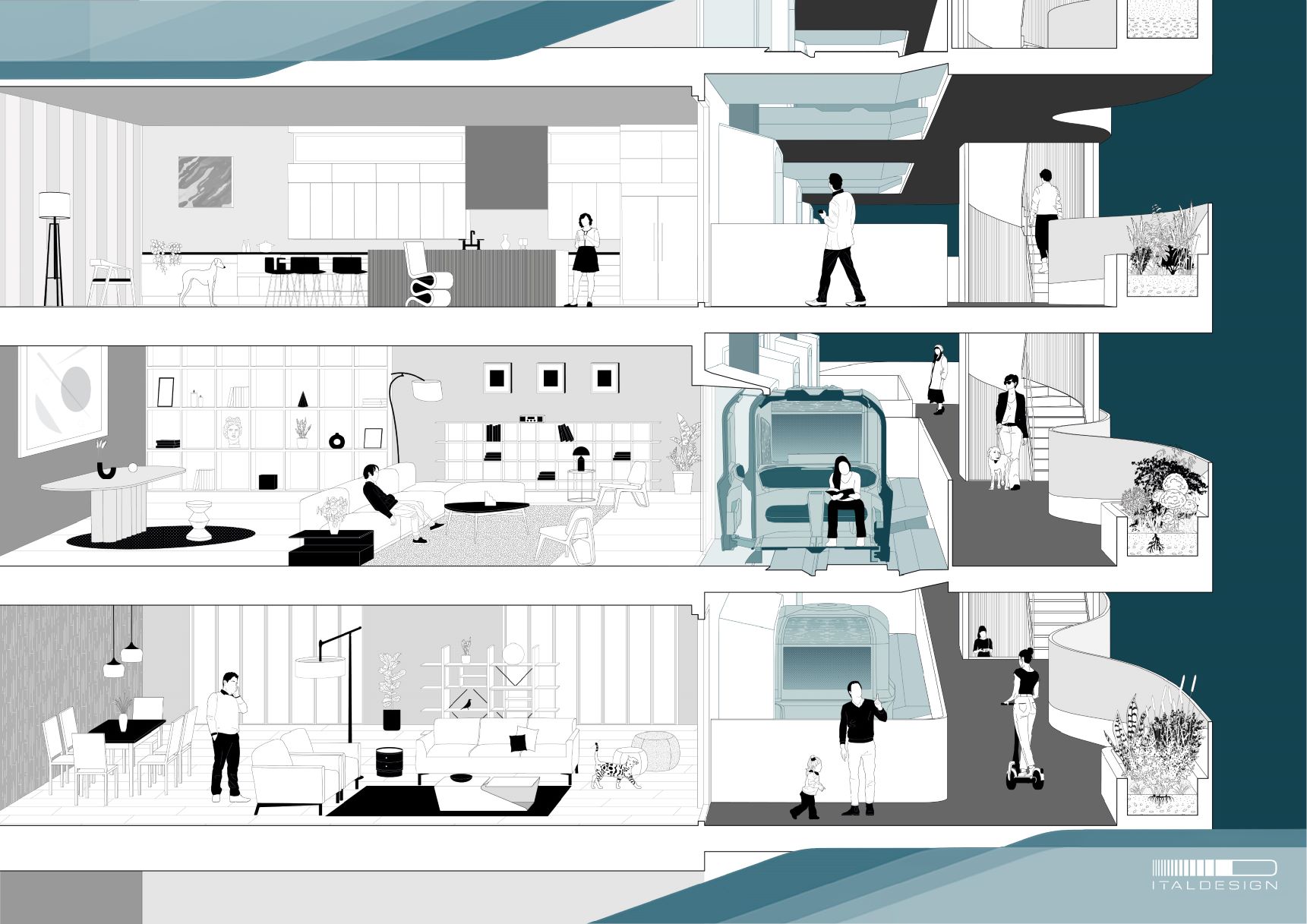
The modular nature of the project allows for many configurations that can offer a functional and exclusive private/public service. The capsule’s interior configurations allow for many public services to be offered to private users at their homes. The range of home services includes basic medical assistance services, telemedicine medical analysis or dental care, catering and show cooking services for private events, fully equipped home massages, home sales of various products, veterinary, and pet grooming.
The system is managed through an app that lets owners book their trip. Scheduling a journey involves collection of the capsule right from an apartment, condominium, or office using a system of hoists developed by Schindler. Once the destination is reached, the capsule is released from the skid to be coupled either with another hoist for positioning up to the right floor of the intended building (residential/office) or with another carrier for longer journeys such as the hyperloop. Once the service cycle is finished, a skid can fulfill bookings from other users or can return autonomously to its charging and parking stations to be available for future calls.
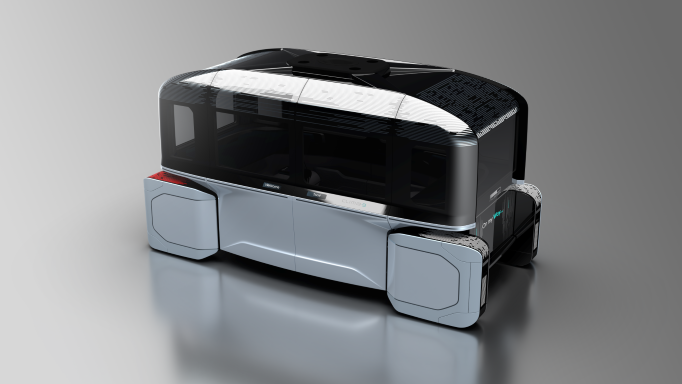
The design of the skid is mainly guided by functional aspects linked to its use. The four steering and driving wheels overhang the symmetric platform and are housed in square casings that completely hide the tires and incorporate various lights, headlights, and different functional and active and passive safety devices. Inside, the “short sides” of the skid feature two 43-in multifunctional screens that can be used for both functional messages and traffic warnings and for fun messages that can be customized by passengers.
The skid’s powertrain uses four electric in-wheel motors for a maximum speed of 75 mph (120 km/h). The battery pack is housed in the central part of the floor, positioned very low down and under the capsule latching system, therefore guaranteeing a very low center of gravity and better use of vertical spaces for passengers. The battery pack with lithium-ion cells has a “guaranteed” range of 200 mi (322 km). Inductive charging at 250 kW is automatic and fast—in 15 min for a 10-80% charge—inside various storage silos located in specific urban areas and in the underground floors of various buildings. Wireless charging is possible in 30 min.
Easyrain safety ecosystem
The skid’s entire safety system was designed by Easyrain, a startup founded in 2013 by current CEO Giovanni Blandina with the goal of reducing road fatalities and saving lives when driving on low-grip surfaces, making a key contribution to achieving the European goal of 0 road fatalities by 2050.
The system can detect the grip offered by the road surface, restore traction, and share information on the grip with vehicles, infrastructures, and companies. It uses a patented Digital Aquaplaning Information (DAI) software that analyzes the vehicle’s parameters and driving dynamics, recognizing hazardous situations linked to driving on wet surfaces in just a few milliseconds, and generates an alert message.
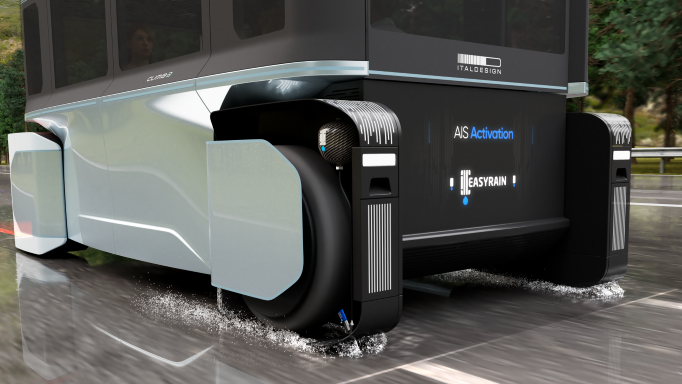
In the case of aquaplaning, DAI provides the Aquaplaning Intelligent Solution (AIS), the first active system in the world that changes road conditions. Through a controlled jet of water, sprayed before the front wheels, AIS breaks the layer of water that causes the tire to float and allows the tire itself to recover its grip with the road, therefore helping the driver to regain full control over the car.
AIS was created as an anti-aquaplaning system, but additional developments are planned. Easyrain is developing the next generation, known in-house as AIS Proto-B, which can eliminate the loss of grip on wet surfaces and even on snow and ice.
The Easyrain ecosystem is completed by the Easyrain Cloud (ERC), which extends the features of DAI to take advantage of data sharing. The information collected by DAI can be used internally to refine the detection algorithm or shared with others to allow services such as predictive maintenance of the road network or the replacement of car parts before failure. The information collected by DAI and shared by the ERC will be used to inform motorists of any hazards before they occur on the hazardous section of road.

